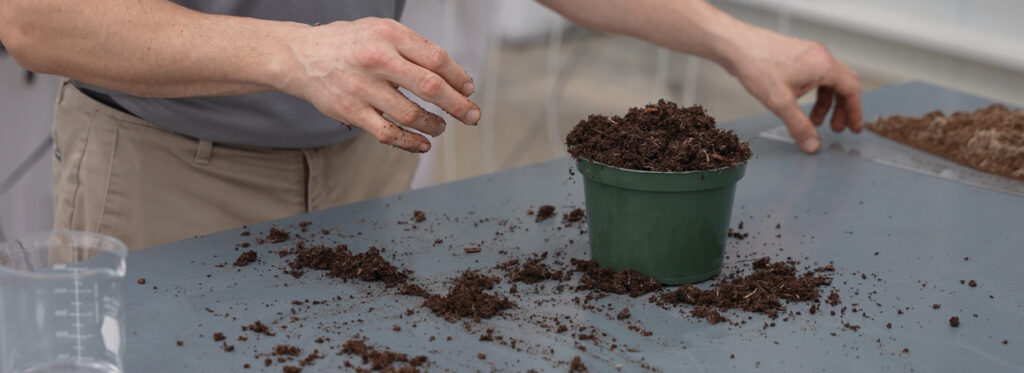Poinsettia Cultivate – Phase 2
By Brian Cantin, Senior Grower Advisor
The month of October begins with the transition from vegetative growth to bract and flower development in poinsettias. Cultural and environmental practices should now be directed towards reducing bract edge burn (BEB), a marginal edge necrosis that colored bracts are particularly susceptible to. As with many plant maladies, to wait until the symptoms are visible creates an unmanageable situation. Bract edge burn can be triggered by various environmental factors as well as cultural practices. Water stress, temperature fluctuations, light intensity, fertilizer regimes, and the percentage of relative humidity can all contribute to BEB. This is a plant disorder in which early preventative measures help to reduce BEB. In this article, rather than expand on the causes of this disorder, it would be better served to focus on the remedial action, i.e., sufficient calcium uptake to support healthy cell wall development. We often assume that adequate levels of calcium have accumulated early in the season in both media and the tissue. This assumption is based on the fact that transpiration rates are higher, since temperatures, humidity, and light intensity are all conducive to calcium uptake by the roots. One has to remember that the plant takes up calcium by means of mass water flow.
If the poinsettia is not actively transpiring due to prolonged periods of cool cloudy weather, the uptake and mobility of calcium to young developing tissue is minimized.
–
Under these conditions, even though calcium is present in adequate levels in the root environment, due to its lack of mobility, the plant will not take up sufficient calcium. Mass water flow driven by high transpiration rates is the driving force behind calcium mobility.
Focusing on the issue of calcium in regard to BEB, three causes of this bract disorder are as follows:
Causes
- Low media pH leads to rapid leaching of calcium resulting in low levels of this element in the media ;
- High levels of magnesium in the media will block the uptake of calcium ;
- Prolonged periods of cool cloudy weather along with high humidity create low transpiration rates preventing the uptake and movement of calcium.
Solutions
- Fertilize plants adequately so as to get enough calcium. Avoid ammonium levels greater than 30% throughout October. Too much ammonium creates soft, rapid growth that can cause BEB.
- Do not apply too much magnesium. Under normal conditions, the ratio of calcium to magnesium should be at least 3:1.
- Grow plants in a low humidity environment, especially under low light conditions. Provide adequate air circulation by using horizontal air flow fans.
- Many articles on BEB have recommended calcium sprays so as to direct this immobile element to the target area. i.e., young developing bracts. Materials used for sprays should be selected for purity to avoid damage to the foliage. A laboratory grade calcium chloride dihydrate (CaCl2•2H2O) has worked well in the past. Calcium sprays will also thicken up epidermal cells reducing the incidence of Botrytis.
–


